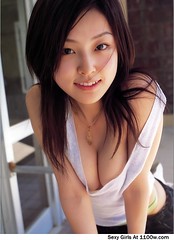
Photo Michael Falco for The New York Times
NO FRILLS The designer Alexander Wang with the models Missy Rayder, center, and Natasa Vojnovic in his New York studio. In five years Mr. Wang, 25, has built a $25 million company
by Ruth La Ferla
DON’T tell Alexander Wang that blue is the new black or that wedge-heel boots are the season’s must-have. Such airy edicts would most likely make him laugh. “No one talks like that anymore,” said Mr. Wang, whose keen sense of what young women want to wear is matched only by his no-nonsense approach to his, um, métier.
“Fashion in some people’s eyes is very untouchable and super-indulgent,” he said. “For me, it’s just clothes to be worn. And at the end of the day, the point is to sell the product.”
That sounds pretty hardnosed, coming as it does from fashion’s latest It Child, a lanky, tousled 25-year-old design-school dropout who, in a scant five years, has leapfrogged from toting garment bags for Vogue to mapping out the vision behind a $25 million family business that is growing at a gallop. Mr. Wang’s aggressively street-inflected collections (only six to date) are as avidly monitored by fashion insiders as they are by the shoppers who snap up his leather leggings, draped jersey dresses and biker vests.
Mr. Wang’s success is partly an outgrowth of his unstudiedly sexy aesthetic, a tough but sultry look that is as much his stock in trade as his signature filmy T-shirts.
His style is “humorously slutty,” said Sally Singer, the fashion features director of Vogue. “He gives you that effortless, languid look that is the province of the young and the club-going.”
But lately this go-to designer for models and assorted urban sylphs has shown signs of growing up. His sophisticated shapes and wallet-friendly prices are now speaking compellingly to a mature population of bankers, teachers and Botoxed social dragonflies who aspire to his brand of urban cool.
“His clothes just hit the edges of what’s acceptable,” Ms. Singer said. “They appeal to that part of you that wishes you were a skinny hipster.”
No need to clue in Veronica Chu, a makeup artist in Manhattan who recently attended a personal appearance by the designer at Barneys New York. “Most of us aren’t a Size 2,” Ms. Chu said. “It’s nice to be able to wear sexy but comfortable clothes that are not overly girly. I’m kind of over that look.”
Another fan, a marketing associate on Wall Street who asked not to be identified because she should have been at work, wore a pinstripe approximation of a banker’s jacket, a straitlaced departure for Mr. Wang. “His merchandise used to be just for the hip and young,” she said. “Now all kinds of women wear his clothes.”
That may be in part because Mr. Wang demonstrates a canny-beyond-his-years grasp of commercial realities. “Ever since the business has launched, it’s been very measured,” said Jennifer Wheeler, the vice president for designer apparel at Nordstrom. “He hasn’t bitten off more than he can chew. His deliveries are steady, and his quality is consistent. He hasn’t gone through some of the growing pains new designers can go through if they have success right off the bat.”
Mr. Wang runs his mini-empire without outside backers or benefit of a family fortune. He works alongside his mother; his sister-in law, Aimie Wang, an accountant; and his brother, Dennis Wang, who brings to the enterprise a background in international business development. “Alexander is the ultimate shopper,” Dennis Wang said. “He’s very aware of what’s out there — the different looks, the different price points. He has a very innate sense, a clarity of vision, of where he sees the company going. Everybody we bring on, from accounting to production, he has an interest in meeting.”
Ms. Singer, who worked closely with the designer at Vogue last year, when he received a cash prize and mentoring from the CFDA/Vogue Fashion Fund, was struck by his patent affection for the bottom line. “What impressed the judges,” she said, “was that he is on to every aspect of what he does: the clothes, the image, the retail growth. It slightly blows you away that someone so young could have taken in so much so quickly.”
Mr. Wang, of course, is a study in precocity, his affection for the rag trade nurtured, it seems, from the cradle. “I can’t remember when he wasn’t into fashion,” Dennis Wang said.
Once, thumbing through a dog-eared copy of Harper’s Bazaar that he had taken from a hair salon, Alexander, then 8, encountered an image that is still etched on his retina. “It was a model in a pinstripe Tom Ford suit for Gucci,” he recalled. Even as a schoolboy, he was savvy enough to recognize the model as Georgina Grenville and the photographer as Patrick Demarchelier. “I carried that picture with me everywhere,” he said.
Growing up in San Francisco, where his parents owned a packaging company, Mr. Wang dreamed of traveling to Paris and London “to check out the stores.” In his teens he visited London, enrolling in a summer course at Central Saint Martins College of Art & Design, spawning ground for Alexander McQueen, among others. He said he found school, including Parsons, which he briefly attended in New York, exasperating.
“What was missing was how would I be able to execute my ideas into a business,” he said. “I knew from Day 1 I wanted to do a lifestyle brand.”
That phrase would not come trippingly to most adolescents. To Mr. Wang, it meant catering to a constituency of skinny, loose-limbed school chums and fashion muses like the model Erin Wasson and the social figure Victoria Traina, who wear his designs with a throwaway flair. Close inspection reveals that he has placed their after-hours uniforms — sweat pants, slouchy T-shirts, shredded jeans — under a microscope, inspecting every hole and blotch and incorporating those gritty touches into his designs: a lacy top, for instance, patterned after sweat stains.
Some observers, unacquainted with such subtleties, dismissed his early efforts as self-conscious and derivative of designers like Rick Owens or Daryl Kerrigan.
Few would argue that Mr. Wang is a trailblazer on the order of his early idols, designers like Helmut Lang. “His clothes have a little more oomph,” said Humberto Leon, an owner of the downtown Manhattan boutique Opening Ceremony. Unconventional without being outrageous, they allow a wide range of women to “feel they can think out of the box,” Mr. Leon said.
Such muted praise is fine with Mr. Wang. “I am not reinventing the wheel,” he said. “I’m not an artiste.”
No ivory tower recluse, he had no sooner sketched and draped his first collection, a six-piece knitwear line introduced in 2005, than he was dashing into stores to see where it was hanging and who had bought it.
“From the very first season I would look at the numbers, check our profit margins,” he said. “Not that I micromanage, but I like to be involved in each process.”
That attention to detail goes some way toward explaining why, when other designers are downsizing, Mr. Wang’s sales have tripled since late last year, according to his brother. Some 400 stores, including 220 in the United States, now carry the Wang label, which encompasses ready-to-wear, shoes and handbags (some 30 percent of the business); a secondary T-shirt line (20 percent); and a recently introduced men’s wear collection.
Was it only a half-dozen years ago that Mr. Wang was prowling eBay for coveted tickets to the CFDA Awards, the Oscars of fashion? That his name could not be uttered without the obligatory qualifier, “no relation to Vera”? Retailers say that more than 50 percent of his clothing sells at full price, impressive compared with less than 20 percent for some more established brands.
Though his name is mentioned these days in the same breath with style-makers like Marc Jacobs, Mr. Wang has hung on to the easy laugh and a sense of cool that seems almost a birthright.
“He is real,” Ms. Wheeler of Nordstrom said. “He’s not having to create some mystique.”
Mr. Wang himself seems taken aback by his swiftly rising fortunes. Smiling sheepishly and tugging at his trademark curls, he could only offer, “It’s, like, weird to see my name on things.”















